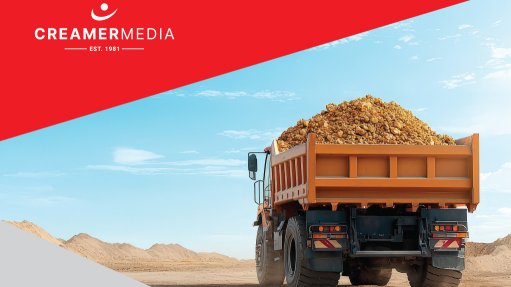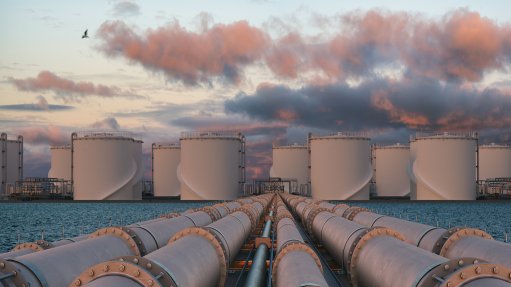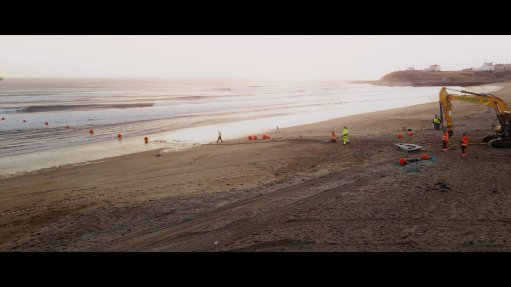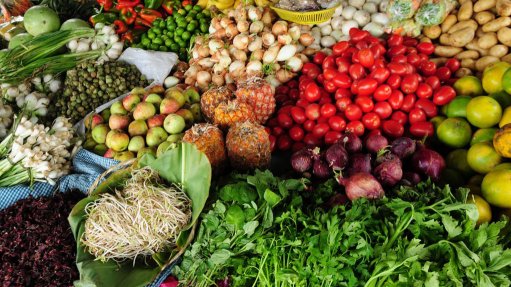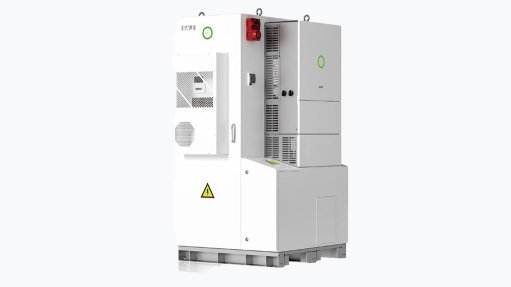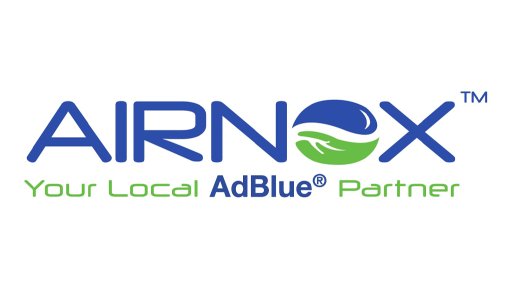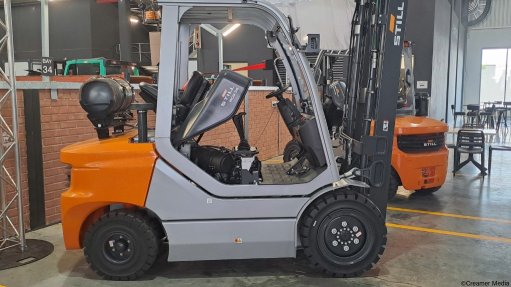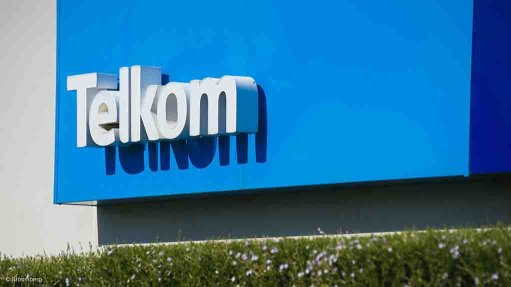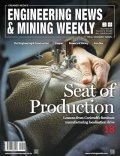SA gold miners look to overcome structural constraints as high prices persist

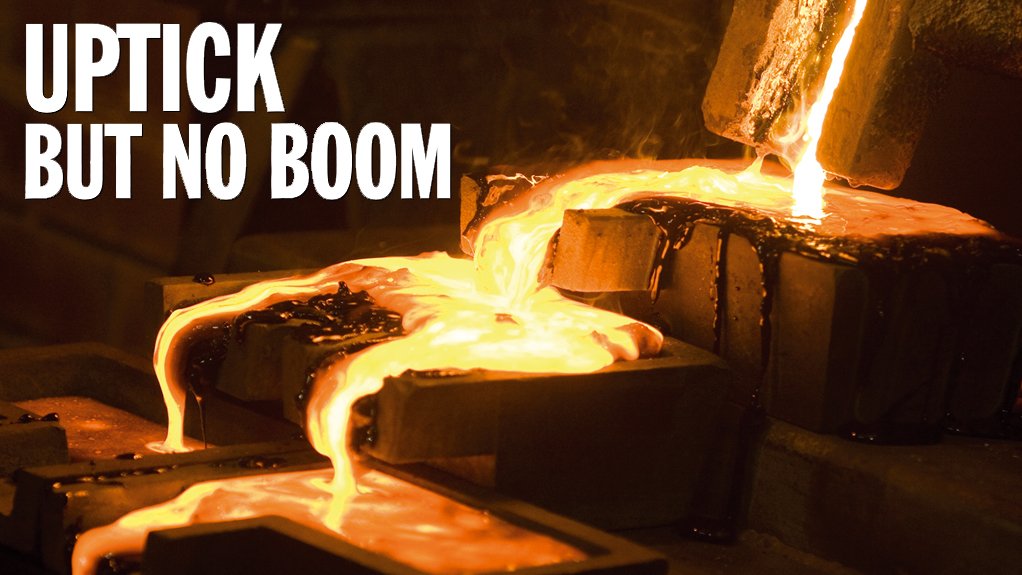
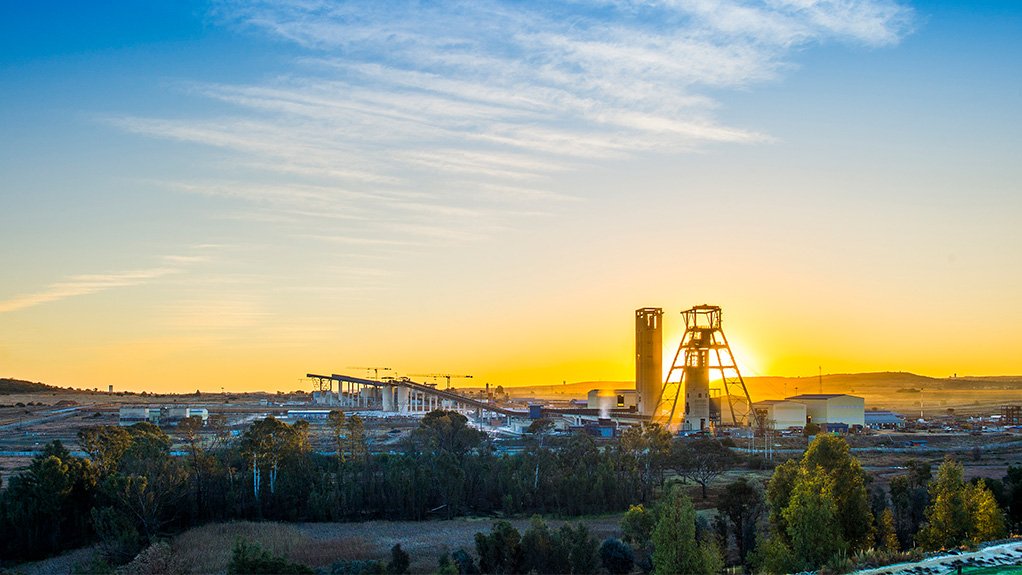

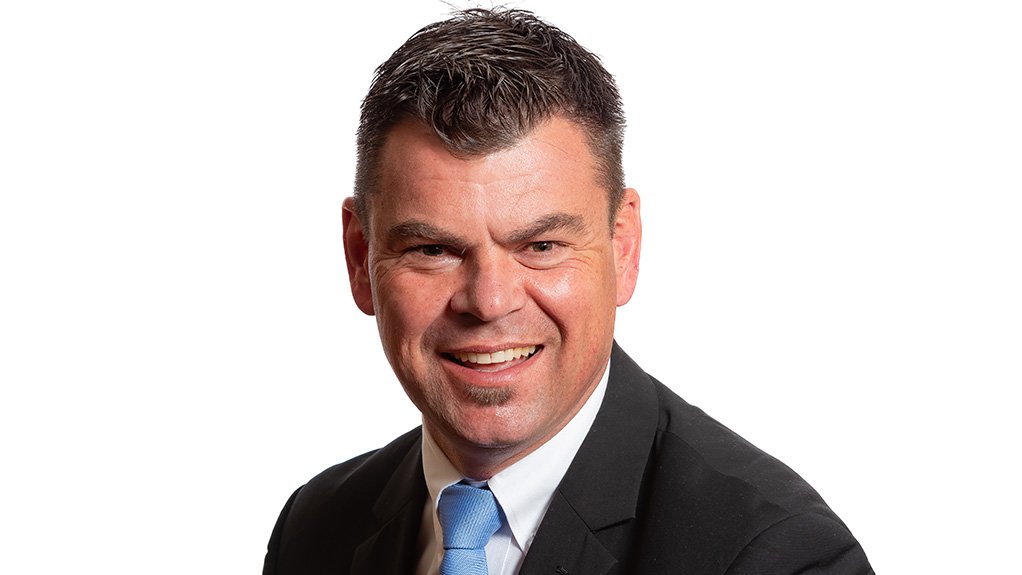
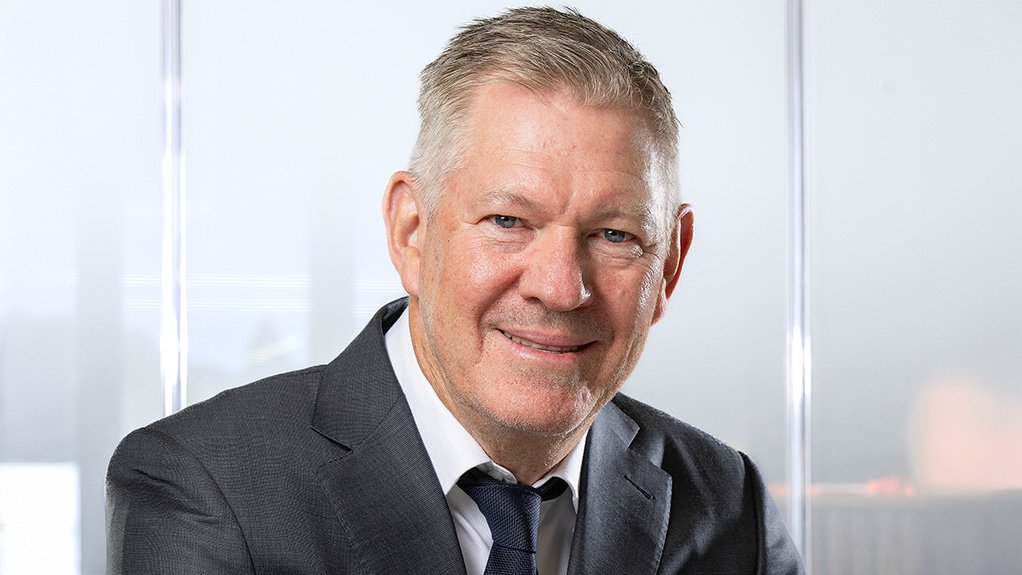
NEW GOLDEN AGE? South African gold miners are embarking on various initiatives to take advantage of the market strength despite local challenges
Pan African CEO Cobus Loots
Harmony CEO Beyers Nel
Gold Fields CEO Mike Fraser
Despite rising gold prices driven by increased central bank demand and ongoing global geopolitical tensions – which should benefit South African gold miners – local production continues to decline as mines become deeper and labour and utility costs escalate.
During the first quarter of this year, the London Bullion Market Association gold price set multiple new record highs, with the quarterly average reaching $2 860/oz, up 38% year-on-year, according to the World Gold Council’s (WGC’s) ‘Gold Demand Trends’ report.
The WGC notes that US trade tariffs, geopolitical uncertainty, stock market volatility and a weaker US dollar were the key factors fuelling the price increase.
Minerals Council South Africa’s Facts and Figures Pocketbook notes that the average price of gold in 2024 increased by 22.9% in US dollar terms, reaching about $2 387/oz on average, while rand-denominated prices rose by 22.1% year-on-year.
Minerals Council South Africa notes that the gold price increase has enabled South African producers to sustain operations at marginal deposits, as the higher prices improve profitability, adding that this favourable price environment has also supported the extension of some shafts and continued investment in low-cost tailings treatment across the industry.
It suggests, however, that the industry continues to face structural challenges, as South Africa’s gold reserves are deep and costly to mine and its mines are ageing, with most having been in operation for decades.
Cost Pressures
As a result, while the gold price may be attractive, the cost base of some companies may preclude them from fully taking advantage of the higher price, says Minerals Council South Africa chief economist Hugo Pienaar.
Local gold production has been shrinking at an average rate of 5.8% a year since 1994, falling from 580 t in 1994 to less than 90 t in 2024.
Pienaar adds that Statistics South Africa’s mining production figures for the first four months of 2025 showed that gold production declined by 5.1% in real terms over the period.
“While we do expect some recovery later in the year as output recovers from, among others, weather-related disruptions early in the year, production is unlikely to shoot the lights out.”
There are no new gold mines in South Africa, with companies focusing on existing operations to extend the lives of mines by going deeper or tapping into resources further from existing shaft infrastructure, he says.
Factors such as costs, ore grades, the type of mining undertaken, the level of mechanisation, the age of the mine, and reserve and resource availability, as well as other operational considerations, dictate what can be mined safely and profitably.
“No discussion would be complete without acknowledging the impact of high electricity tariffs. These rising costs can significantly affect mining viability, potentially rendering certain deposits uneconomic,” Pienaar adds.
Echoing this sentiment, Nedbank Corporate and Investment Banking markets research head Arnold van Graan argues that the higher gold price will boost gold producer free cash flows and “paper over some of the cracks” at some of the marginal operations.
The higher gold price would also enable producers to exploit resources that were previously considered uneconomic, although the industry would need to spend significant amounts of capital to fully benefit from the gold price windfall and for it to have a lasting impact.
“There should be a slight uptick in output, but a material and sustained increase in output will require significant amounts of capital for an extended period . . . This is unlikely, even at this gold price. We do, however, expect the gold price windfall to lead to increased investment in the few high-quality, long-life mines still operating in the country, ” he adds.
How Miners Are Responding
Despite the challenges they face, South African gold miners are embarking on various initiatives to take advantage of this market strength.
Gold miner Harmony Gold Mining Company has capitalised on the elevated prices by adopting sustainable mining practices and conservative planning parameters.
The company has opted not to drop its cut-off grades or change its strategy as the gold price increases, says CEO Beyers Nel. “Retaining our focus on what we can control throughout the gold cycle has resulted in Harmony’s maintaining a robust balance sheet with excellent free cash flow generation and margin expansion.”
The initiatives the company is pursuing include safety and productivity enhancements, maintaining good cost controls and investing in international copper/gold assets.
“Commodity prices can turn very quickly, and our plans are such that we ensure we have the correct strategy in place to mine safely first, as well as sustainably and profitably, regardless of the gold or copper price. This is done through a disciplined and balanced approach to capital allocation,” says Nel.
Harmony has guided production of 1.4- million to 1.5-million ounces of gold and gold equivalents across its operations for the 2025 financial year.
Nel notes the miner is focusing on value over volume, and is not adding production at its South African underground or surface operations merely for the sake of growth: “We are improving the quality – average reserve grade – of our portfolio and have firm control of operating costs. We plan at yearly mining inflation of 8% to 9% a year.”
Midtier gold miner Pan African Resources says it is in a “particularly advantageous position”, as it has executed new high-margin surface retreatment projects and completed its capital-intensive expansion projects as the gold price began its upward trajectory.
Pan African CEO Cobus Loots says the company has commissioned the Mogale Tailings Retreatment (MTR) surface retreatment operation, in Johannesburg, valued at about R2.5-billion, and the Noble’s mine, in Australia, with a price tag of about R600-million, within a 12-month period. The two operations will add about 40% to the company’s yearly production, improving its production profile to about 300 000 oz in the 2026 financial year.
The company has also spent about R100-million at its Evander underground development projects, in Mpumalanga, which will ensure steady production for the next 13 years.
Pan African expects Evander to reach steady-state production following infrastructure upgrades that entailed equipping a subvertical shaft for hoisting, replacing the cumbersome conveyor belt system and significantly improving efficiencies.
Loots says the new production asset at MTR, including the Soweto Cluster tailings storage facilities, will produce about 60 000 oz/y at an all-in sustaining cost of just over $1 000/oz.
With the addition of the Elikhulu tailings retreatment operation at Evander and the shallow openpit operations at Tennant Mines, in Australia, over 60% of Pan African’s production will be from lower-cost surface mining operations.
Loots notes that production ramp-up has been ahead of schedule at MTR, while Tennant Mines is expected to achieve steady state early in its first few months of operation.
The company anticipates just under 200 000 oz/y in production for the 2025 financial year ended June, noting that this will increase substantially, approaching 300 000 oz in financial year 2026 as the company will include a full year’s production from MTR, and with the Tennant Mines fully ramped-up.
“Not every gold mining company can claim to commission two producing gold mining operations within a year, and subsequently grow high-margin yearly production by some 40%. As this has been undertaken in a rising gold price environment, it will substantially improve returns to our shareholders, improve our balance sheet and benefit other stakeholders impacted [on] by our operations,” says Loots.
Gold Fields CEO Mike Fraser says that while the macro environment will support gold prices in the near to medium term, the company’s long-term planning is not based on spot gold prices.
“Disciplined capital allocation is key to ensure we invest in opportunities to improve our existing assets through asset optimisation and organic growth options, as well as greenfield exploration and acquisitions to ensure we continue to improve the quality of returns of our business.”
Through 100%-owned projects, strategic joint ventures and equity partnerships, the company is working to sustain a pipeline of projects capable of supporting reserve replacement for its current portfolio.
The company expects group production to increase to between 2.25-million and 2.45-million ounces this year, up from about 2.1-million ounces in 2024. The key drivers of this production growth include the ramp-up at Salares Norte, in Chile; steady, reliable production from South Deep mine, in Gauteng; the company’s Australian assets; and the Tarkwa mine, in Ghana.
Fraser says investing in gold has become increasingly attractive in recent years, as the gold price continues to strengthen. Historically, gold equities have underperformed the metal itself, largely owing to operational risk and inconsistent capital discipline.
“At Gold Fields, we are positioning ourselves as a compelling option for . . . specialist and generalist investors seeking gold exposure – underpinned by reliable operational delivery and a clear commitment to capital discipline. This includes balancing reinvestment in our portfolio, disciplined growth and competitive shareholder returns.”
A key part of this strategy is the company’s renewed focus on near-mine exploration, as it offers the most efficient, lower-risk route to unlocking additional value within its existing portfolio.
It is also expanding the Khanyisa solar plant at South Deep mine with an additional 25 MW, plus battery storage, to boost energy efficiency and reduce costs, thereby securing the mine’s future as a foundation asset.
Regarding greenfield exploration, Gold Fields earmarked $45-million this year to advance and upgrade its global greenfield portfolio, with a focus on top-tier jurisdictions such as Australia, Canada and South America.
Fraser notes the company is also advancing greenfield exploration in select, high-potential jurisdictions to ensure long-term sustainability: “We believe we can achieve this while delivering positive social and environmental outcomes aligned to our purpose.”
Article Enquiry
Email Article
Save Article
Feedback
To advertise email advertising@creamermedia.co.za or click here
Comments
Press Office
Announcements
What's On
Subscribe to improve your user experience...
Option 1 (equivalent of R125 a month):
Receive a weekly copy of Creamer Media's Engineering News & Mining Weekly magazine
(print copy for those in South Africa and e-magazine for those outside of South Africa)
Receive daily email newsletters
Access to full search results
Access archive of magazine back copies
Access to Projects in Progress
Access to ONE Research Report of your choice in PDF format
Option 2 (equivalent of R375 a month):
All benefits from Option 1
PLUS
Access to Creamer Media's Research Channel Africa for ALL Research Reports, in PDF format, on various industrial and mining sectors
including Electricity; Water; Energy Transition; Hydrogen; Roads, Rail and Ports; Coal; Gold; Platinum; Battery Metals; etc.
Already a subscriber?
Forgotten your password?
Receive weekly copy of Creamer Media's Engineering News & Mining Weekly magazine (print copy for those in South Africa and e-magazine for those outside of South Africa)
➕
Recieve daily email newsletters
➕
Access to full search results
➕
Access archive of magazine back copies
➕
Access to Projects in Progress
➕
Access to ONE Research Report of your choice in PDF format
RESEARCH CHANNEL AFRICA
R4500 (equivalent of R375 a month)
SUBSCRIBEAll benefits from Option 1
➕
Access to Creamer Media's Research Channel Africa for ALL Research Reports on various industrial and mining sectors, in PDF format, including on:
Electricity
➕
Water
➕
Energy Transition
➕
Hydrogen
➕
Roads, Rail and Ports
➕
Coal
➕
Gold
➕
Platinum
➕
Battery Metals
➕
etc.
Receive all benefits from Option 1 or Option 2 delivered to numerous people at your company
➕
Multiple User names and Passwords for simultaneous log-ins
➕
Intranet integration access to all in your organisation










